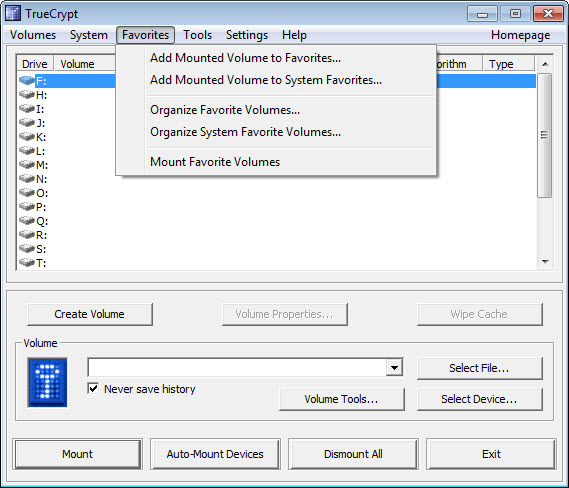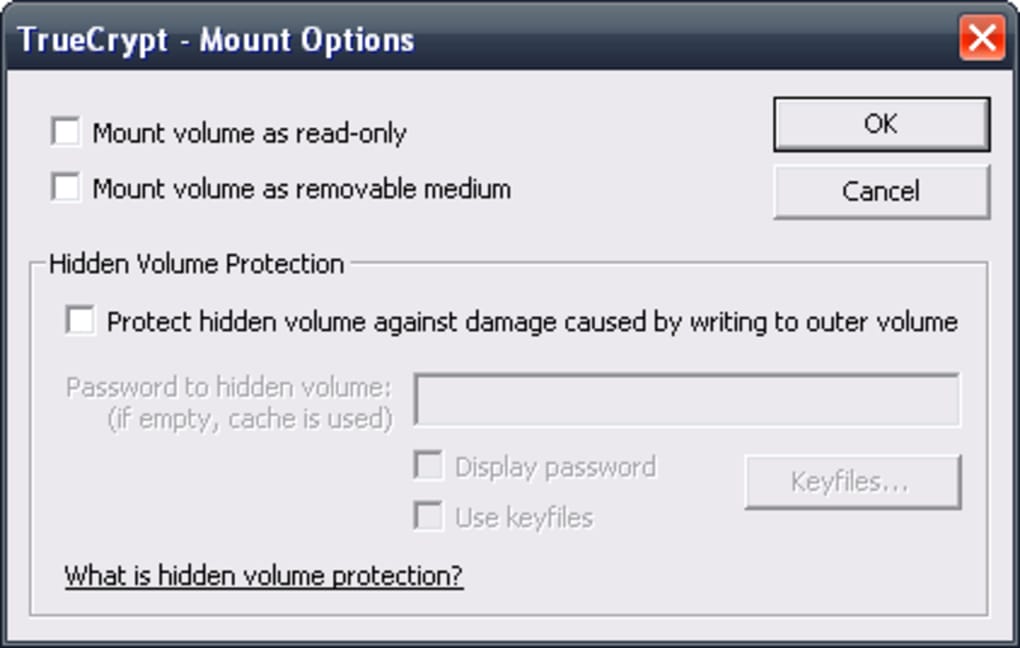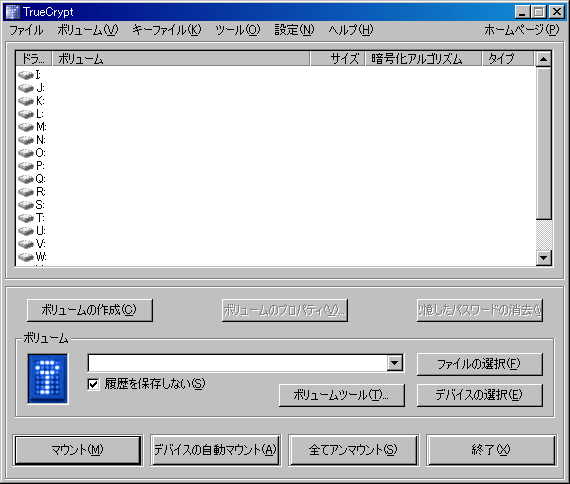

- #Truecrypt ed how to#
- #Truecrypt ed install#
- #Truecrypt ed driver#
- #Truecrypt ed password#
- #Truecrypt ed Pc#
#Truecrypt ed Pc#
This from the theory that the PC doesn’t need to tell everybody and sundry who may be watching that any file in any open folder is a TrueCrypt file. tc file extension with TrueCrypt may be something to not do.

Unless you are really, really worried about some of the content of memory ending up being written to the hard drive, which would take forensics to decipher, I suggest avoiding this setting. I also have enough desktop icons.) Disabling the Windows paging files (virtual memory on the hard drive) is for those paranoid enough to fear black helicopters. The basic unit of security is trust, and I trust that I can control access to my computer. Probably so if you are the sole operator of the PC.) Do you want to add TrueCrypt to the Start menu and put an icon on the desktop? (Maybe or maybe not, depending on your needs.
#Truecrypt ed install#
Do you want to install for all users on the PC? (Probably not if associates or other family members use the PC. Since we assume that you are doing this with the PC which you will primarily use the card, select “Install” for the normal mode and “Next” to continue. You’ll immediately be faced with a choice: install it to the computer, or merely extract the files. First, download the application and run the installer. If you already have TrueCrypt installed, please scroll down to the next section.

For more information about what normal users can and can’t do with TrueCrypt Traveler, please see their documentation and find the section entitled “Using TrueCrypt Without Administrative Privileges.”Īssuming that your privileges are squared away, let’s proceed.
#Truecrypt ed driver#
This is needed because TrueCrypt uses a device driver to provide on-the-fly, transparent encryption and decryption, and normal users are not allowed to install device drivers. If you are running on a machine on which you’re not the administrator, you’ll need to get someone with administrator privileges to install it for you. Note: Running TrueCrypt in “Traveler mode” requires that the user have administrator’s privileges in Windows. We’ll even make it auto-run in Windows to start itself. We’ll be using an 8 GB PNY Attaché USB flash drive formatted to Vista’s NTFS file system (for large file size support). Let’s look at encrypting all of a USB flash drive and then running TrueCrypt from the flash drive itself. So what if we don’t want to be cloak and dagger about it? What if we want to encrypt the entire card and be blatant about it?
#Truecrypt ed password#
The security model assumed that if the user were ever forced into divulging the password to the container file, the antagonists would never know that the hidden volume was there and would be distracted by the files they find in the outer volume that look sensitive.Īt best, it appears that this scheme could succeed most easily if the container file and the hidden volume were very small – certainly not the 2 GB affair we used for an example. Another was that the file space allocated to the container file is not hidden from the operating system. One was that the container file in which the hidden volume was placed is itself visible.
#Truecrypt ed how to#
Last edited by rchr November 15th, 2009 at 01:35 PM.In “ How to Create a Hidden, Encrypted Folder on Your USB Flash Drive,” we accomplished what we set out to do using TrueCrypt, but we found some small problems along the way. Is there anything I can do to fix this or gather more imformations about the issue without damaging the partition? Maybe fsck or commands described at ? But how to do all this with partition that is truecrypt'ed. I have no idea what to do now, I'm just a casual user and don't want to do anything that might destroy data on the drive. I have no idea if it's related to this file opened with VLC but I don't remember doing anything else with the drive. While it happend I wasn't writing any data on the disc, I had one video clip from this drive opened with VLC (on pause for about an hour), then I tried accessing some catalogs with Nautilus but it didn't read anything, I tried unmounting partition but it gave me an error that it's still in use so I remembered about VLC, which didn't want to unpause this clip and didn't want to close itself either so I forced the it's close with system monitor and then partition unmounted, I unplugged the drive and plugged again and after that it didn't mount again. HDD is pretty new (~3-4 weeks), there was no power failures or anything that could physically damage the drive. There was one ext3 partition on this HDD, created with Truecrypt using it's wizard and was mounting/working without any problems until yesterday.


 0 kommentar(er)
0 kommentar(er)
